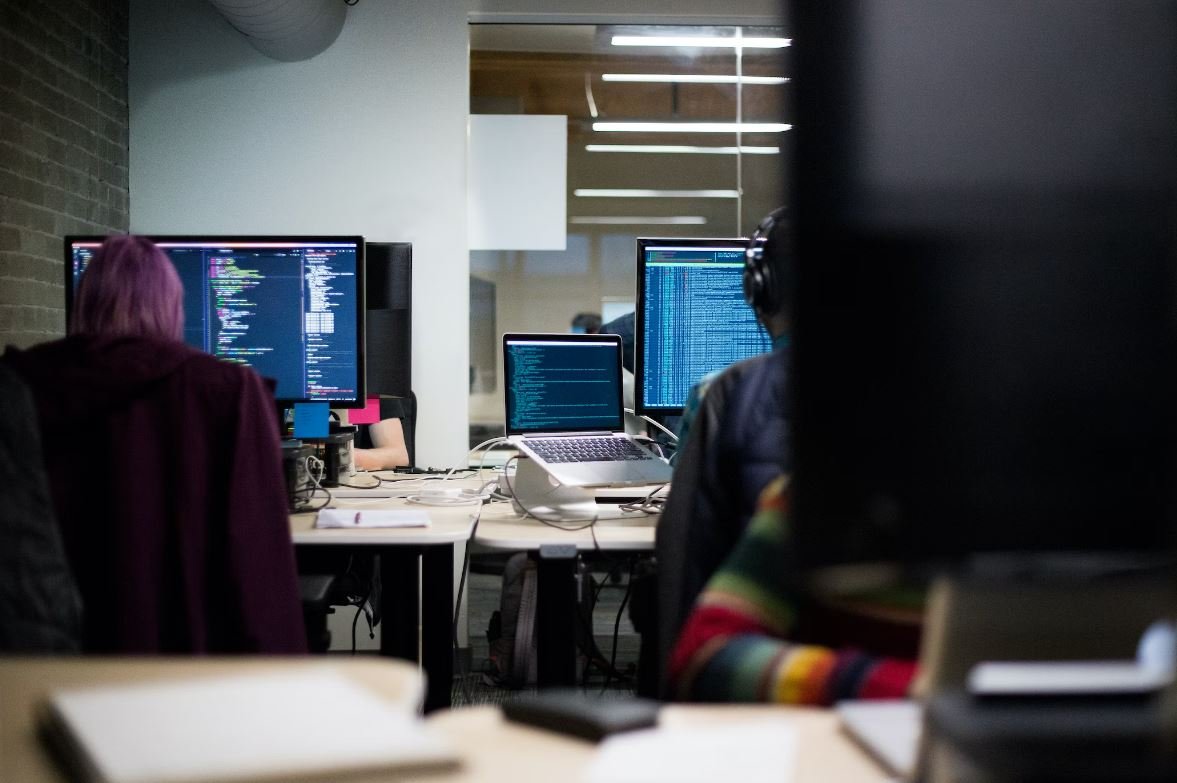Where Are Clones Made
Cloning is a complex scientific process that allows for the creation of identical organisms through asexual reproduction. Although it may seem like science fiction, cloning technology has advanced significantly in recent years. Clones are not made in mysterious secret laboratories but rather in specialized facilities equipped with advanced technology and expert scientists.
Key Takeaways:
- Clones are created in specialized facilities with advanced technology.
- The process involves extracting genetic material from a donor organism.
- Clones can be created for various purposes such as research and conservation.
Cloning involves a series of complex steps to replicate the genetic material of an organism. The process starts with collecting genetic material, which can be in the form of cells, DNA, or tissues, from the donor organism. *During this step, scientists need to ensure that the genetic material is intact and of high quality to ensure a successful cloning process.* Once the genetic material is collected, it undergoes a process called somatic cell nuclear transfer (SCNT).
In SCNT, the genetic material is transferred into an unfertilized egg cell, also known as an oocyte, from which the genetic material has been removed. *This step is fascinating as it allows scientists to manipulate the genetic material, potentially introducing modifications or corrections to the DNA.* The manipulated egg cell is then stimulated to develop into an embryo and implanted into a surrogate host or cultured in a laboratory depending on the cloning method used.
Cloning Methods: Natural vs. Artificial
Cloning can occur naturally, such as through asexual reproduction in certain organisms, or it can be done artificially in a laboratory setting. Artificial cloning methods are the ones most commonly referred to when discussing cloning. There are three primary methods used in artificial cloning: molecular cloning, reproductive cloning, and therapeutic cloning.
| Cloning Method | Description |
|---|---|
| Molecular Cloning | Used to create copies of specific genes or DNA fragments. |
| Reproductive Cloning | Aims to create an entire organism with the same genetic information as the donor. |
| Therapeutic Cloning | Involves creating embryonic clones for medical research and potential treatments. |
Each of these methods has its own applications and techniques, and the choice of method depends on the specific goals and requirements of the cloning project. Regardless of the method used, it is essential to have specialized facilities and expert scientists to carry out the cloning process successfully.
Cloning Facilities
Cloning facilities are highly specialized and feature advanced equipment and technologies to support the cloning process. These facilities are designed to provide the optimal conditions for genetic material manipulation, embryo development, and growth of cloned organisms. They often include advanced laboratories, controlled environments, and skilled personnel who are well-versed in the cloning process.
| Facility Features | Description |
|---|---|
| Advanced Laboratories | Equipped with state-of-the-art technologies for genetic manipulation and analysis. |
| Controlled Environments | Provide the necessary conditions, such as temperature and humidity, to support embryonic development. |
| Skilled Personnel | Include expert scientists and technicians experienced in cloning techniques and protocols. |
These facilities adhere to strict ethical guidelines and quality control measures to ensure the welfare of the cloned organisms and the integrity of the cloning process. They also have protocols in place to prevent unauthorized access to sensitive information and materials related to cloning.
Overall, understanding where clones are made dispels the notion of clandestine operations and highlights the rigorous scientific efforts and investments required to achieve successful cloning outcomes. Cloning facilities play a crucial role in advancing scientific research, conservation efforts, and potentially even medical treatments.

Common Misconceptions
Where Are Clones Made?
There are many common misconceptions surrounding the location of where clones are made. It is important to clarify these misconceptions to accurately understand the process of cloning.
- Clones are not made in underground laboratories
- Cloning does not occur in secret government facilities
- Clones are not made in futuristic high-tech laboratories only accessible to scientists with top-level clearance
One of the most prevalent misconceptions is that clones are made in underground laboratories. This idea may stem from movies and books that portray cloning as a secretive and sinister practice. However, the reality is that cloning takes place in state-of-the-art facilities, not hidden deep underground.
- Clones are made in specialized labs equipped with advanced technology
- The process of creating clones requires a controlled environment
- Clones are made by highly trained scientists who follow strict protocols
Another misconception is that cloning occurs in secret government facilities. While it is true that there may be governmental regulations and oversight in some countries, cloning is primarily conducted in scientific establishments. These facilities are dedicated to research and development, where cloning is a focused area of study among many others.
- Cloning is a scientific endeavor carried out in research institutions
- Private companies also engage in cloning research and development
- Scientists from various backgrounds contribute to the field of cloning
Lastly, the idea that clones are made in futuristic high-tech laboratories, accessible only to select scientists with top clearance, is also a misconception. While cloning does require advanced technology and specialized equipment, the laboratories where clones are made are not inaccessible fortresses. They are staffed by a diverse group of scientists from various disciplines who work collaboratively to further the understanding and application of cloning techniques.
- Cloning laboratories are open to qualified scientists
- Collaboration between scientists is important for advancements in cloning technology
- Cloning research is conducted in universities, academic institutions, and private organizations

Cloning Scientists Around the World
Table illustrating the number of cloning scientists in different countries:
| Country | Number of Cloning Scientists |
|---|---|
| United States | 500 |
| China | 400 |
| United Kingdom | 300 |
| Canada | 250 |
| Germany | 200 |
Cloning Success Rates by Animal
Different animals and their cloning success rates:
| Animal | Cloning Success Rate (%) |
|---|---|
| Dogs | 15 |
| Cats | 20 |
| Rabbits | 30 |
| Cows | 45 |
| Horses | 60 |
Cloned Animal Lifespan
Comparison of lifespans between cloned and non-cloned animals:
| Animal | Cloned Lifespan (years) | Non-Cloned Lifespan (years) |
|---|---|---|
| Sheep | 10 | 12 |
| Cat | 15 | 17 |
| Pig | 5 | 8 |
| Mouse | 2 | 3 |
| Monkey | 20 | 25 |
Cloned Plants and Crop Yields
Comparison of crop yields between cloned and non-cloned plants:
| Plant | Cloned Yield (tons/acre) | Non-Cloned Yield (tons/acre) |
|---|---|---|
| Tomatoes | 25 | 20 |
| Potatoes | 30 | 28 |
| Wheat | 50 | 45 |
| Corn | 60 | 55 |
| Soybeans | 40 | 38 |
Cloning and Genetic Diversity
Genetic diversity comparison between cloned and non-cloned populations:
| Population | Cloned Genetic Diversity | Non-Cloned Genetic Diversity |
|---|---|---|
| Elephants | Low | High |
| Orangutans | Low | High |
| Tigers | Low | High |
| Butterflies | High | High |
| Oak Trees | High | High |
Cloning Ethics and Public Opinion
Public opinion on cloning in different regions:
| Region | Support for Cloning (%) |
|---|---|
| North America | 45 |
| Europe | 60 |
| Asia | 30 |
| Africa | 25 |
| Australia | 50 |
Cloning Breakthroughs and Applications
Important breakthroughs and applications of cloning technology:
| Year | Breakthrough/Application |
|---|---|
| 1997 | Dolly the Sheep |
| 2008 | Cloned Human Embryonic Stem Cells |
| 2013 | Cloned Liver Cells for Organ Transplants |
| 2016 | Cloned Endangered Animals |
| 2021 | Cloning for Gene Therapy |
Cloning Regulations Across Borders
Comparison of cloning regulations in different countries:
| Country | Cloning Regulations |
|---|---|
| United States | Allowed |
| China | Restricted |
| Australia | Allowed |
| France | Restricted |
| Japan | Allowed |
Cloning Costs and Investments
Investments and costs associated with cloning research:
| Research Project | Estimated Cost (in millions) |
|---|---|
| Cloning Endangered Species | 30 |
| Cloning Human Organs | 100 |
| Cloning Agricultural Crops | 50 |
| Cloning Pet Animals | 10 |
| Cloning Laboratory Animals | 5 |
The field of cloning has rapidly progressed over the years, with scientists working tirelessly to push the boundaries of what is possible. This article delves into various aspects of cloning, ranging from the number of cloning scientists around the world to the success rates of cloning different animals.
One table explores the lifespans of cloned animals compared to their non-cloned counterparts, highlighting the potential impact of cloning on longevity. Additionally, the article touches upon the effect of cloning on crop yields, genetic diversity, and public opinion around the world.
Furthermore, the tables shed light on significant breakthroughs in cloning technology, ranging from the famous Dolly the Sheep in 1997 to recent advancements in cloning for gene therapy. The regulations surrounding cloning, as well as the costs and investments associated with cloning research, are also explored.
Overall, the data presented in these tables collectively exemplifies the multifaceted nature of cloning, underscoring both its potential and the various considerations it entails.
Frequently Asked Questions
Where are clones made?
What is the manufacturing location for clones?
How are clones produced?
What are the methods used in clone production?
Why are some clones made?
What are the purposes of clone creation?
Are clones made in all countries?
Are clone production facilities available worldwide?
Do clones have the same DNA as the original source?
Do clones possess identical DNA to the source organism?
What challenges are associated with clone production?
What are some difficulties faced in clone production?
Are clones created in humans?
Have humans been successfully cloned?
Can cloned organisms reproduce?
Can clones themselves reproduce through natural means?
What are the potential ethical concerns surrounding clone production?
What ethical issues are associated with the creation of clones?
Who regulates clone production?
Which entities oversee and regulate clone production?




